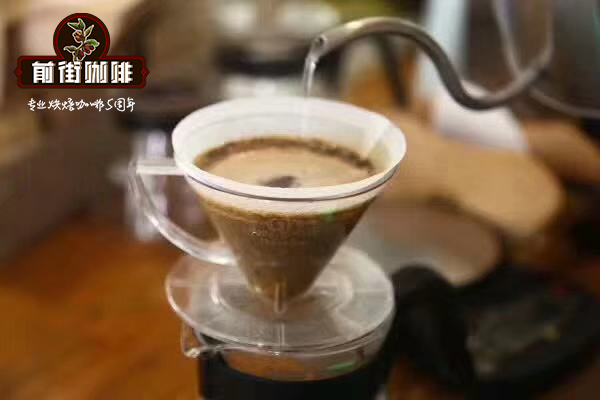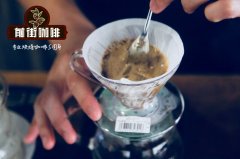Introduction to Ethiopian coffee producing areas? But the introduction of Bena forest sun beans?

Professional coffee knowledge exchange more coffee bean information please follow the coffee workshop (Wechat official account cafe_style)
Ethiopia is the country where coffee was first discovered. It is still the most important producing country and the best in terms of coffee quality and output. Coffee is mostly traditional Arabica species, with an annual output of about 350000 tons and more than 70% of it is exported to countries around the world. About 15 million people in the country are engaged in coffee-related industries, and more than 90% of the farms or cooperatives are planted in small areas. The crops produced by Ethiopia in 2008 include wheat. Corn? sesame? Coffee is fully imported into the ECX trading system (Ethiopian Commodity Exchange) to replace the existing auction and export methods, such as coffee farmers or cooperatives, sending coffee to ECX centralized warehouses of the same level. Beans from the same producing areas will be mixed together and auctioned directly. You don't know which farmers or cooperatives it is? Produced in producing areas, this practice actually has no effect on output and quality, and it is easier to tell whether coffee is good or bad by price. What is triggered is that intermediate traders cannot freely track their satisfactory profits [low price and high quality] so that consumers are more clear and transparent, because they will be heavily taxed if they are not through the ECX trading system, and now more than 90% are through this trading system. However, the ECX trading system is not a good thing for buyers who love boutique coffee. For this reason, the DST (Direct Specialty Trade) system was launched in Ethiopia in 2010. The DST system is an irregularly held auction in Ethiopia. Only by passing the SCAA cup test standard of more than 80 points, the fine coffee specialty coffee can be traded with foreign raw bean merchants under the name of their own farm or cooperative.
Kebena Forest Cobena Forest Sun beans this is the Red Cherry project coffee beans in Limkosa, located in the highlands of western Ethiopia, the farm covers an area of about 400ha and employs 300 to 500 local owners.
The Red Cherry project is undoubtedly the most successful case to protect farmers in Ethiopia, where farmers get a reasonable price by producing good coffee, and Dutch bean manufacturer Trabocca invests profits in drying equipment, production tools and some equipment. This is a good way to cooperate between sales and production, and it is worth learning from those who are interested in coffee in Taiwan.
Property Characteristics: farm characteristics
Name name: Kebena Forest Kobena Forest
Region producing area: Limu Kossa Limkosa
Country country: Ethiopia Ethiopia
Grade level: G3
Altitude: over 1700m to 2200m
Harvest period harvest time: October every year to January of the following year
Certification certification: all coffee without certification is non-toxic and organic.
Soil Type soil properties: PH5.2~6.2 red brown laterite
Coffee Characteristics: coffee characteristics
Variety variety: heirloom cultivars traditional native species of Yega
Processing System treatment: Dry-Processed sun exposure
Appearance appearance: Longberry long rice-shaped 16-18-mesh
Top Jury Descriptions judge's comment: the baking degree measured by the cup for 60 seconds at the beginning of the first explosion (Cinnamon)
Aroma aroma / flavor flavor: almond jam, licorice, black tea, guava, vanilla, brown sugar, honey
Acid value: lemon, passion fruit, orange, tartaric acid
Complex complexity and other other: wild grass aroma, sweet feeling is very full, fermented wine taste mellow, tail rhyme a little bit sun bean card astringent conversion to sweet
Important Notice :
前街咖啡 FrontStreet Coffee has moved to new addredd:
FrontStreet Coffee Address: 315,Donghua East Road,GuangZhou
Tel:020 38364473
- Prev

What is the difference between shallow baked beans and deep baked beans? What coffee beans taste good?
Professional coffee knowledge exchange more coffee bean information please pay attention to the coffee workshop (Wechat official account cafe_style) generally coffee on the market boasts that coffee is fragrant and mellow, and some good coffee emphasizes that acid is great. What is the difference between roasting and roasting? generally, we call coffee beans exploding to 1 minute after the end of the explosion called shallow roasting at this time to taste coffee beans.
- Next

The adjustment of hand steaming, what do you need to pay attention to?
Professional coffee knowledge exchange more coffee bean information Please pay attention to the coffee workshop (Wechat official account cafe_style) in the process of learning hand flushing, in addition to knowing the conventional round water injection method and cut off water method, the most commonly asked term is "steaming" and put forward all kinds of strange theories. I think it is necessary to write an explanation about it to explain one or two. First, we...
Related
- Beginners will see the "Coffee pull flower" guide!
- What is the difference between ice blog purified milk and ordinary milk coffee?
- Why is the Philippines the largest producer of crops in Liberia?
- For coffee extraction, should the fine powder be retained?
- How does extracted espresso fill pressed powder? How much strength does it take to press the powder?
- How to make jasmine cold extract coffee? Is the jasmine + latte good?
- Will this little toy really make the coffee taste better? How does Lily Drip affect coffee extraction?
- Will the action of slapping the filter cup also affect coffee extraction?
- What's the difference between powder-to-water ratio and powder-to-liquid ratio?
- What is the Ethiopian local species? What does it have to do with Heirloom native species?

